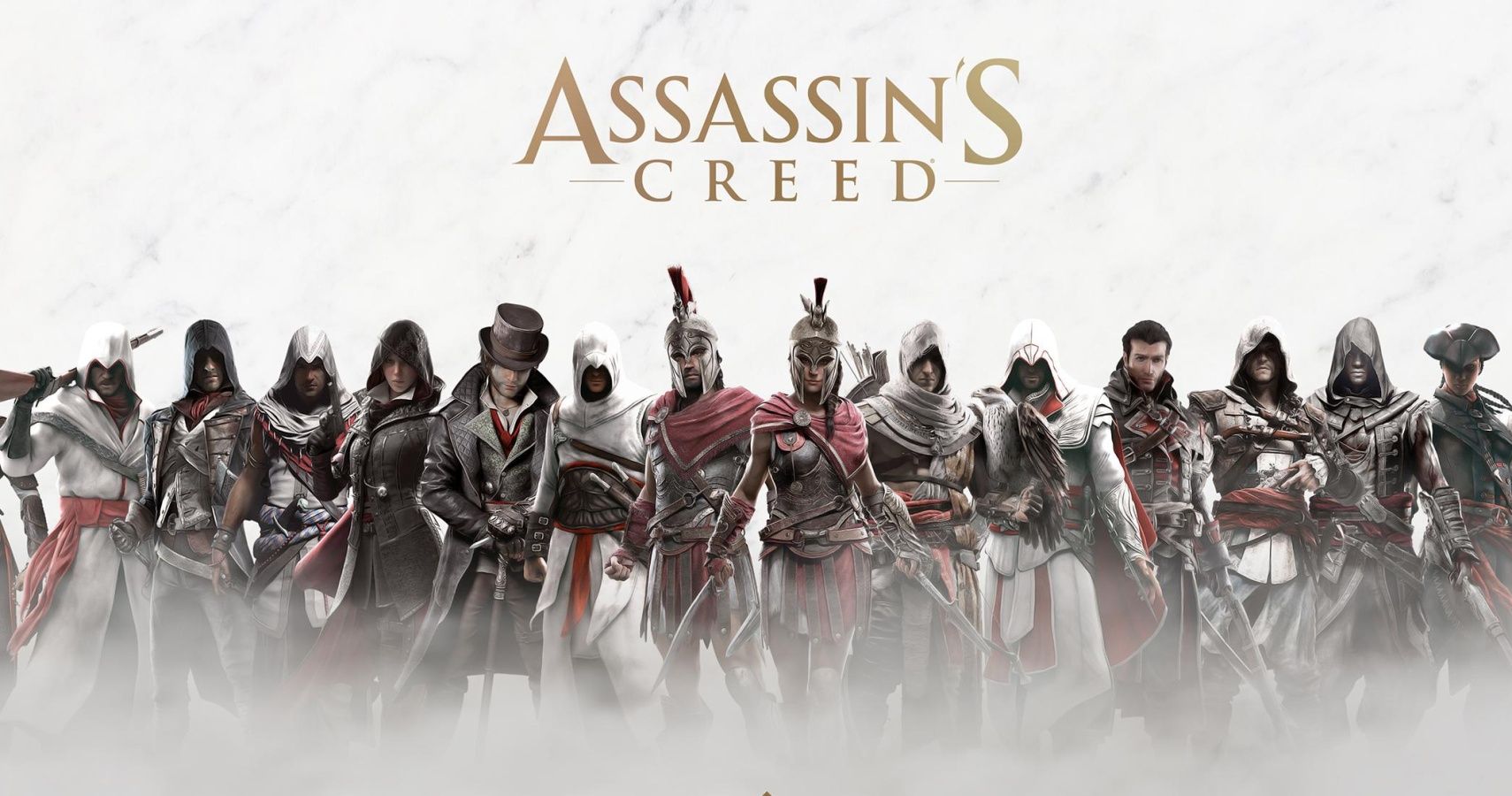The Historical Accuracy of the Assassin’s Creed Games
Introducing the Series
The Assassin’s Creed franchise created by Ubisoft is one of the most popular and successful video game series ever. The games are set in various historical time periods and settings, portraying fictional stories of the centuries-old conflict between the Assassin brotherhood and the Templar order. While the overarching plot involves this time-travelling meta-narrative, each installment aims to authentically recreate the key events, environments and cultures of the eras they are set in through extensive historical research. Let’s take a deeper look at how accurately the games represent history.

Egypt in Origins
When Origins was released, it included a virtual tour of Hellenic Era Egypt filled with historical details. The virtual walking tour allowed players to discover hours of information without combat or objectives. Egypt’s pyramids and monuments were beautifully reproduced, as were everyday aspects like Greek learning in Alexandria and Egyptian salt extraction methods. UV scanning has shown statues and buildings in antiquity were as vibrantly colored as Origins depicts. Overall, Origins achieved a high level of authenticity in its portrayal of Ptolemaic Egypt.
Famous Events and Figures
The Creed games interweave actual historical events and figures into their fictional stories. Some that featured included the siege of Masyaf, the sinking of the Spanish Treasure Fleet, the Pazzi conspiracy in Florence, the storming of the Bastille and Borgia intrigues in Rome. These plot points generally played out as their real-life counterparts. Even less famous incidents like the 1755 Lisbon earthquake and Boston Massacre were reconstructed faithfully based on records. Notable rulers like Cleopatra, Cesare Borgia and Pope Alexander VI were shown warts and all in line with historical accounts.
Questioning Unity’s Narrative
While very accurate in recreating late 18th century Paris, Unity comes under scrutiny for its depiction of the French Revolution. It presents a “noble but flawed vs violent mob” narrative that has been criticized as revisionist. In reality, the aristocracy faced widespread popular anger for decades of misrule and tax oppression. By glossing over the legitimate grievances fueling revolution, Unity distorts history for the sake of drama. Still, the city of Paris itself was painstakingly rebuilt in-game.
Odyssey’s Interpretation of Ancient Greece
Fans and historians praise Odyssey’s beautiful recreation of golden age Greece’s landscapes, architecture, and inclusion of accurate historical figures like Leonidas. However, some criticize how it portrays Athens and Sparta as equally strong on land and sea, when in reality Athens dominated on water while Sparta focused on infantry warfare. Minor quibbles aside, Odyssey succeeds at transporting players back to this iconic period through its richly detailed open world. Its characters even speak in reconstructed versions of ancient Greek.
Fact or Fiction in the Historical Framework
While heavily researched, the Assassin’s Creed games are fictional works set within a historical framework. Players must bear in mind that certain elements exist to serve the fantasy storyline rather than preserve strict factual accuracy. Events may be condensed or reinterpreted slightly for narrative purposes. Minor deviations from scholarly consensus on historical interpretations can also occur. Overall though, the games provide an entertaining way to learn about different eras through environmental and cultural recreation if not relied on as academic sources.
The Renaissance of AC II
Set in the vibrant Italian Renaissance, Assassin’s Creed II transported players to a lovingly recreated 15th century Florence, Forlì, San Gimignano, Venice and more. Blue highlighted how even small details like artwork and fashions reflected careful research. Leonardo da Vinci is a memorable character, albeit his time in Rome was brief not extended. The urban parkour successfully conveyed the freedom and beauty of movement through this setting. Minor details aside, ACII succeeds in its goal of “full sensory immersion” into this pivotal period.
Critiquing History in Odyssey and AC3
Players praised how AC Odyssey featured accurate portrayals and ages for figures like Leonidas but voiced criticisms over Athens and Sparta’s equal prowess on land and sea, contrary to historical reality. Similarly, while AC3 faithfully recreated the environments of pre-revolution America, some faulted fictionalizations like Paul Revere’s famed midnight ride being more widespread than the limited action it truly involved. Despite these small flaws however, both games overall did a laudable job of historically informing while prioritizing fun gameplay.
Assessing Degrees of Accuracy
The Assassin’s Creed games cannot be considered definitive historical sources due to their necessity to compress or fictionalize some elements for gameplay and narrative purposes. Players must be discerning regarding what is authentic recreation versus artistic interpretation. At the same time, they represent good starting points to spark interest in further independent research on studied periods. If assessed critically and not taken as absolute fact, the AC games can absolutely be enjoyed as largely accurate virtual histories with impressive production values thanks to their extensive research foundations.
The Evolution of Assassin’s Creed and Portrayals of History
Since its inception in 2007, Ubisoft’s blockbuster Assassin’s Creed franchise has transported millions of players to meticulously recreated historical settings spanning centuries. While the overarching plot involves sci-fi narrative devices like genetic memories and First Civilization precursors, each new installment refines the balance between interactive storytelling and authentic cultural representation. Let’s examine how the series has evolved in its handling of history over successive releases set in landmark time periods.
The Crusades Setting of AC1
2007’s inaugural Assassin’s Creed planted the seeds of ambition by placing players within the famed holy land conflicts between Christian crusaders and Muslim defenders. Its architectural interpretations of famous 12th century Acre and Damascus laid the blueprint for future installments marrying gameplay with learning opportunities. While rough around the edges technology-wise, AC1 established the franchise’s identity as a vehicle to virtually experience history.
Renaissance Italy at its Peak in AC II
The sequel transported fans to the vibrant 15th century Italian renaissance, with a level of polish and verisimilitude that stunned critics and players alike. Minute representations from styles of art and fashion to expanded parkour mechanics brought this storied era alive in new ways. Leonardo Da Vinci served as a multi-dimensional historical character integrated seamlessly into the plot. Florence, Venice and other cities became interactive history textbooks in three dimensions.
Cultural Height of Egypt’s New Kingdom in Origins
Setting the stage for more refined open worlds, Origins opted to delve into Egypt during its final gasps as an independent nation under Ptolemaic rule. Players explored seamlessly recreated environments brimming with facts on everything from religious practices to engineering marvels like the Lighthouse of Alexandria. This entry established a new standard for using virtual tourism to educate while entertaining around historical settings.
Athens and Sparta at their Golden Age in Odyssey
Taking cues from Origins, Odyssey crafted the largest Assassin’s Creed map yet in recreating Classical Greece in its golden 5th century BC zenith. While gameplay saw some anachronisms, meticulous efforts went into authenticifying everything from myths and dialog to architecture and beautiful wilderness. Social dynamics within great city-states like Athens and Spartan culture were preserved to high degrees of historical fidelity.
Conclusion
Over 15 years, the landmark Assassin’s Creed franchise has advanced in synchronizing enrichment and interactivity pertaining to past cultures. While casual entertainment remains the priority, each new chapter refines the balance between factual authenticity and compelling interactive fiction. Students and history buffs alike continue benefitting from these virtual museums that transport audiences to landmark eras in immersive new ways.
Further Pushing Boundaries with New Settings
As the Assassin’s Creed series enters its third console generation, developers at Ubisoft continuously leverage new technologies to bring more historic settings to interactive life with each progressive installment. Let’s explore how two of the most recent entries pushed creative boundaries to new heights through their ambitious temporal settings.
Revolutionary Paris Comes to Life in Unity
2014’s Unity made a bold decision to reconstruct an entire 18th century city - Paris during the tumult of the French Revolution. Despite some narrative missteps, the development team painstakingly replicated landmarks, neighborhoods, and architectural marvels in photorealistic quality. Parkour took an evolutionary leap, allowing fluid navigation amid the living chaos of the period in breathtaking景觀。
Voyaging the Golden Age of Piracy in Black Flag
A break from the historical formula, 2013’s Black Flag transported players to the Caribbean circa 1715 as a pirate named Edward Kenway. Leveraging a expansive ocean playground for the first time alongside land areas like Havana and Nassau, it immersed audiences in the atmosphere and opportunism of piracy’s halcyon period. Naval combat evolved into a rich new subsystem, while cultural flavours of the early West Indies were on full display.
Feuding England and America in Revolutionary Setting
After Connor’s pivotal role in the American Revolutionary saga depicted in AC3, 2018’s remastered Rogue presented a multi-layered alternate perspective through Shay Patrick Cormac, an erstwhile Assassin turned Templar. Spanning both sides of the Atlantic during the volatile 1750s, it shed new light on the complex diplomatic pressures and clandestine forces that drove the colonies towards
